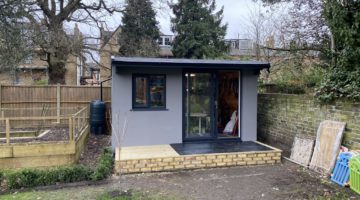
What is Thermal Bridging
You may have come across this term if you have ever spoken to a builder about insulation – thermal bridges are essentially places in the home where insulation is not continuous and so heat loss is much higher in that specific spot.
Imagine if you had 10cm of external wall insulation on the outside of your property. This would in most cases provide a nice level of comfort in the inside of the property, ensuring sizeable energy savings on heating bills.
Now imagine putting a steel nail through all 10cm of the insulation so it hits the brick underneath. This is a (crude) example of a thermal bridge – suddenly heat loss will occur through the steel nail into the external environment, and this would also create cold spots inside the property.
The issue with cold spots is that they can lead to condensation, which can in turn lead to mould if the water sits in place for a prolonged period.
One of the greatest challenges of modern building is to ensure there is as little thermal bridging as possible.
Thermal Bridging can occur in three different ways:
Repeating Thermal Bridging
Imagine laying 100mm of insulation down insulation down in the loft space. If you were to do this, you would normally run this parallel between the joists. The issue is that where the joists are lying there is actually no insulation, so despite filling between the joists with 100mm of insulation, thermal bridging is taking place where the joists are situated.
The good thing about repeating thermal bridging is that it is easy for builders to plan for since it is predictable. They need to take necessary precautions to ensure the u-value across the area is consistent regardless of where it is measured.
Non-Repeating Thermal Bridging
Non-repeating thermal bridging typically occurs at the junctions between plain building elements. They are often caused by discontinuities in the thermal envelope, for example a steel lintel positioned above a window needed to provide additional support.

Like repeating thermal bridging this can be planned for, but it is harder for construction workers to do.
Random Thermal Bridging
The example used above of the nail going through a layer of insulation would be described as random thermal bridging. These are difficult for builders to plan for, but commonly include things like external taps or phone boxes – even gas / electric meter housing would be a form of random thermal bridging.
What can you do to prevent thermal bridging?
To be honest, your builder should be the main person that needs to worry about this. Trying to get a consistent u-value across sections of the thermal envelope should be their bread and butter!
However, you can simply apply a thin layer of insulation to try and counter the thermal bridge, although we would still recommend getting a builder in to do the works.
The one thing you can do is try to reduce the amount of condensation, by reducing humidity in rooms (by opening windows or turning on mechanical ventilation).












No Comments yet! Be the first one.